A review of functional adhesives, coatings and resins for designers and manufacturers seeking optimal mechanical performance, safety, thermal conductivity, noise reduction, and sustainability.
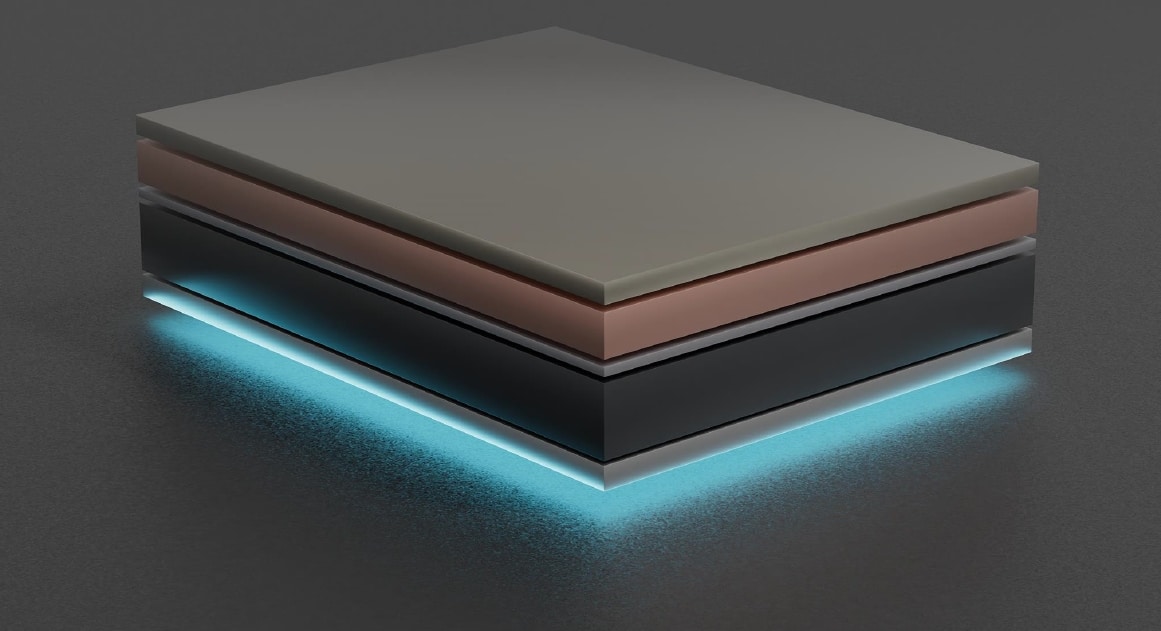
Although the utility of electric vehicles (EVs) has made substantial progress in the last ten years, much work remains toward improving their yield and lowering cost. The nucleus of this challenge is the battery system, where designers must try and balance competing constraints such as cost, power output and weight to optimize vehicle performance.
This discussion focuses on the properties, performance, and benefits of functional adhesives, coatings, and resins with an emphasis on the following, core concepts:
- Structural & thermal adhesives
- Thermal gap fillers & pastes
- Conductive coatings for EMI/RFI suppression
- Protective coatings and resins
Industry insiders theorize that the battery capacity needs to be between $100 and $250/kWh to achieve cost parity with current internal combustion engines (ICEs) as established more than a decade ago (in the Danish Electronic Business article, “Density up, price down”. Designers have made more significant strides concerning range parity – meaning an EV can travel as far from a single charge as an ICE vehicle – where vehicles like the Rimac Concept One and Daihatsu Mira have achieved single charge ranges of 500km (about 310 miles) and 1000km (about 620 miles), respectively.
The most promising path towards resolving both the technical and economic constraints is improving the battery pack; however, every design iteration must consider potential penalties to thermal management, electromagnetic and radio frequency interference (EMI/RFI) susceptibility, and environmental/physical exposure. MG Chemicals boasts an expansive portfolio of material solutions that cover common challenges encountered with battery pack systems, including dielectric coatings, conductive coatings, structural adhesives, and thermal interface materials (TIMs), which are discussed below with examples of specific applications.
Functional Adhesives for Bonding & Protection
The primary function of an adhesive is to bond two surfaces together that provides a sufficient mechanical hold. However, specialty adhesives with secondary features such as flame retardancy and thermal conductivity have additional elements that are of value when used in battery pack assemblies. Overheating and runaway fire have been persistent challenges within the battery pack design, which specialty adhesives can help to mitigate. Additionally, these adhesives can improve thermal cycling stability and reduce the weight of the battery by eliminating welds.

Structural & Thermal Adhesives
The leading battery type for EVs is the Lithium-ion battery, owing mainly to its high energy density and longevity. However, a drawback of this battery is the risk of fire if the battery becomes punctured or charged improperly. To reduce this risk, designers use flame retardant materials such as our 9200FR to build firewalls around the battery pack, helping prevent the spread of fire. This adhesive is a two-part flame retardant structural epoxy that provides exceptional bond strength and is certified by Underwriter Laboratories as UL94 V-0. It is also an excellent replacement for PET films used along the cooling tray to adhere modules for packs in a cylindrical or prismatic arrangement. (See Figure 1.)
Thermal management is a critical design parameter for battery packs as individual cells comprising the modules heat up during charging, making quick and effective heat dissipation necessary. Modules are bonded together within the pack array using thermally conductive adhesives like our 8329TFF and 8349TFM that facilitates effective lateral heat transfer out of the pack, regulating the temperature.
Thermal gap fillers & pastes
Unlike thermal adhesives which create permanent bonds, thermal gap fillers are materials that can be easily removed, with their primary function to displace air at the interface between the heat-generating unit and heat sink. Hot spots within circuits are placed in contact with thermally conductive materials like aluminum heat sinks or the metallic chassis to conduct heat away from the circuit and prevent overheating. Tiny air gaps and irregularities along the component/heat sink interface however may act as insulators and trap heat.
A gap filler conforms to the interface’s specific geometry, ensuring a continuous path of thermally conductive material from the hotspot to the heat sink. These materials have exceptional thermal conductivity, exhibit tacky adhesion, and can easily be compressed to control the bond line thickness and lower thermal resistivity. Further, their low modulus makes them an ideal material under aggressive thermal cycling conditions.
MG Chemicals offers an expansive line of silicone-free gap filler materials, thus avoiding common issues such as creep and contamination. These products have exceptionally high thermal conductivity and are available as a tacky gel or paste. Table 1 summarizes the properties of different gap filler materials being added to the catalog of thermal gap fillers and thermal pastes.
| Thermal Conductivity (W/mk) | Flammability | Consistency | |
| 8327GL3 | 3.5 | UL94 V-0 | Gel |
| 8327GL5 | 5.1 | UL94 V-0 | Gel |
| 8327GL6 | 6 | UL94 V-0 | Gel |
| 8617A | 3 | N/A | Paste |
| 8618 | 6 | N/A | Paste |
Table 1: Properties of new thermal gap filler and thermal paste materials from MG Chemicals
Conductive Coatings for EMI/RFI suppression
The electrification of vehicles presents a substantial design challenge of how to prevent ubiquitous radio signals from interfering with the car battery’s circuitry and cause malfunction. Classically, the solution to protect circuits was to encase them within metal housing which reflects any incoming electromagnetic fields from neighboring devices, preventing crosstalk. These materials, however, are both cost- prohibitive and heavy, leading manufacturers to switch to cheaper, lightweight plastics.
Plastics like ABS can be quickly and cheaply metallized using electrically conductive coatings, which are one or two-part systems that incorporate conductive fillers like nickel, copper and silver dispersed within binder systems standard in most industrial paints. Conductive coatings such as our 841AR and 842AR can be applied on the interior of the battery pack lid and housing assembly to block interference from external magnetic and electric fields, allowing auto manufacturers to switch from heavy metal battery casings to lightweight plastics, reducing both weight and cost.
A secondary use of electrically conductive coatings within battery pack systems is the easy fabrication of electrical traces. Specifically, these conductive coatings are applied along the wall of battery cells to reduce electrical resistance between active materials and the aluminum foil, which improves charging and discharging performance. (See Figure 2.)
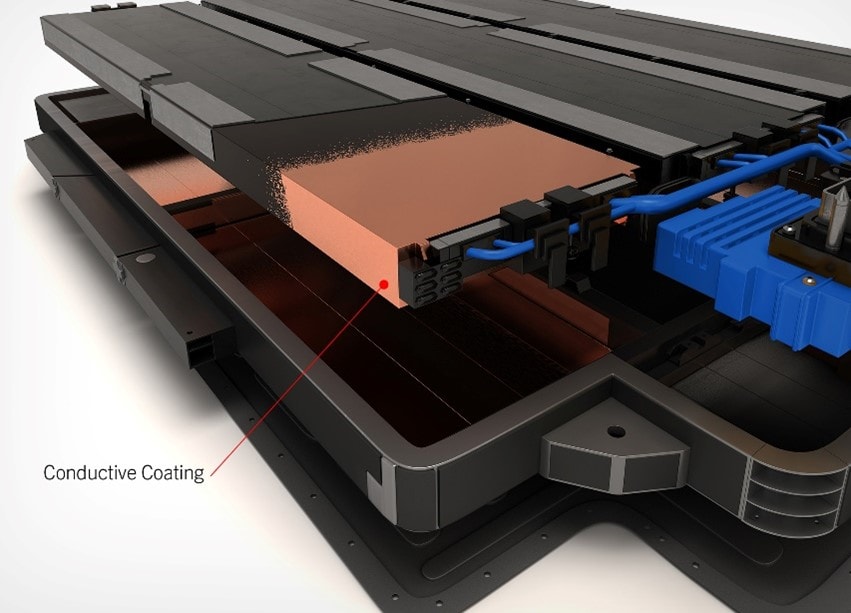
Protective Coatings & Resins
Vehicle components are exposed to a host of contaminants ranging from the fluids circulating within the vehicle to salts and other corrosive elements from the external environment. To ensure the longevity of EV batteries, coatings and resins are applied to protect sections against corrosion, physical shocks and electrical arcing. Dielectric coatings including our 4223F, 4225, 4200UV and 4226A are used for coating electrical components such as PCBAs, busbars and cold plates that are prone to failure from corrosion or electrical discharge (See Figure 3).
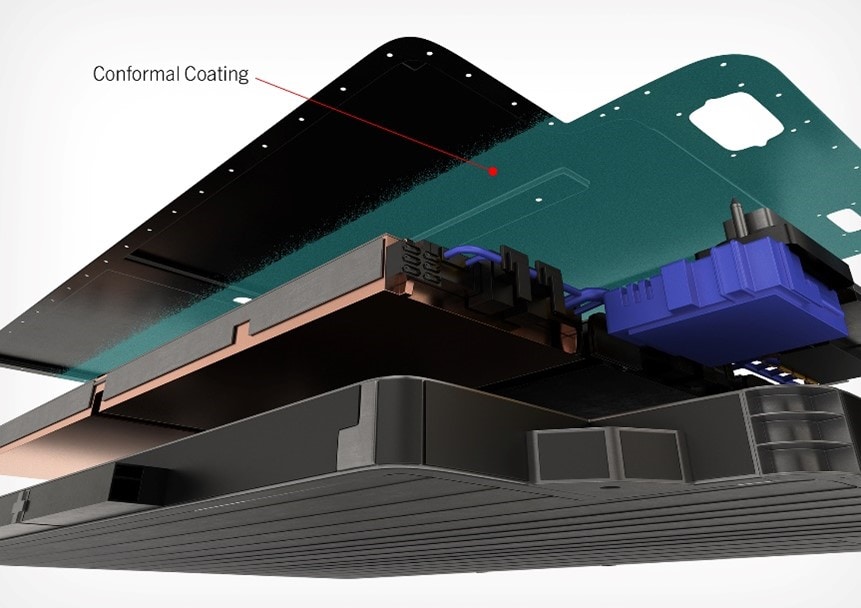
While effective for safeguarding parts from external environmental contaminants, dielectric coatings do not provide any defense from physical stresses such as sudden impacts or shocks experienced during vehicle operation. Instead, whole assemblies are potted under liquid resins, which cure to a solid finish and provide all the environmental protections afforded by dielectric coatings with the added benefit of physical protection.
Epoxy, polyurethane, and silicone are the three prevailing chemistries used for electrical potting, with each material having certain advantages and drawbacks compared to the other chemistries. The radar diagram in Figure 4 shows how epoxy, polyurethane and silicone compare over specific performance indicators.
To find a resin system that will work, it is critical to flesh out the key technical requirements. For battery packs in all arrangements, hard materials like epoxy are preferred as these materials have a high modulus and deflect kinetic impacts, protecting the physical integrity of the pack system. Like adhesives, potting compounds are often multi-functional as added fillers give the resins additional properties like flame retardancy and thermal conductivity.
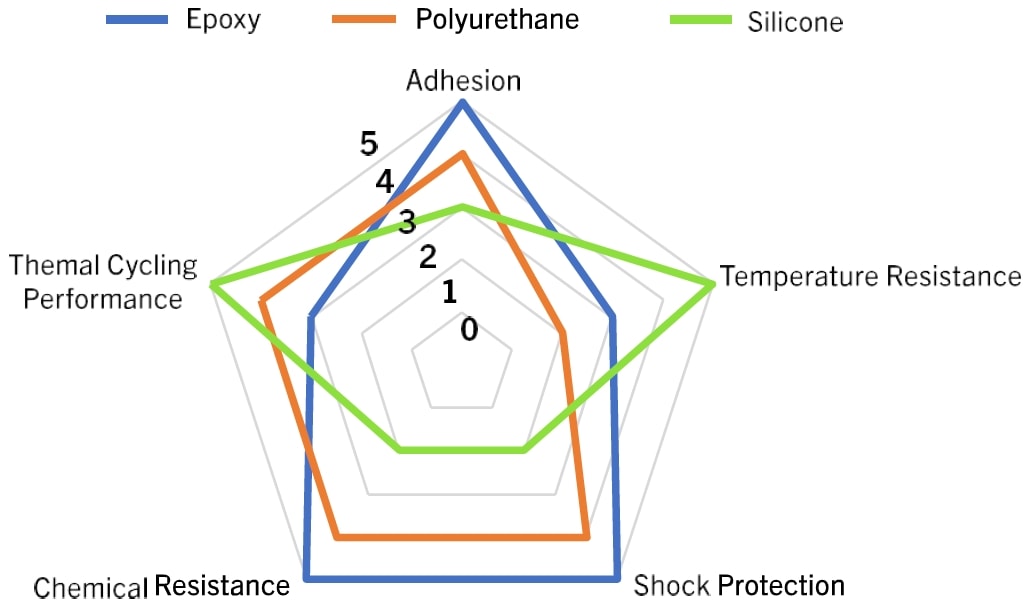
Epoxy resins like our 834B and 834HTC potting compounds cure to a hard rigid finish and can be used to fill gaps between cells, ensuring everything remains tightly fixtured in place. The potting compounds are both thermally conductive and flame retardant, helping prevent overheating and runaway fire in the event of ignition Our 8329HTC is set to launch later this year and is a true industry breakthrough with a thermal conductivity of 2.7 W/mk while other new products like the TimCool 1.4 (1.4 W/mk) and TimCool 2.5 offer exceptional heat dissipation properties.
Download a PDF Version of This White Paper
About MG Chemicals
Founded in 1955, M.G. Chemicals is a manufacturer and wholesaler of chemical products for the electronics industry. Our facility has a state-of-the-art testing lab along with a talented team of professionals who work intimately with industry leaders to develop tailored and innovative solutions. Further, our distribution network reaches nearly every continent making MG a truly global partner.
M.G. Chemicals’ Burlington site has an ISO 9001:2015 quality management system. We are a firm believer in the ISO 9001 philosophy of producing quality products that are designed to meet the specific needs of our customers.

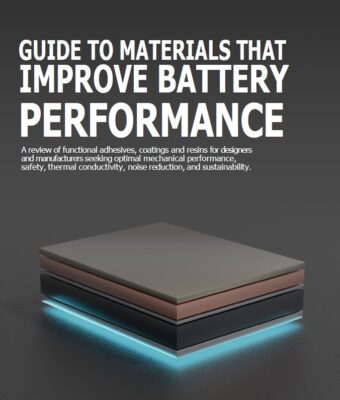
I would like to review your white paper with a colleague.